Implementation Walkthrough
Real-world deployment of containerized Node.js application on AWS ECS Fargate with automated CI/CD, infrastructure as code, and production-ready security practices.
CI/CD Pipeline with GitHub Actions
Fully automated deployment pipeline that builds, tests, and deploys the application with environment-specific configuration and secrets management.
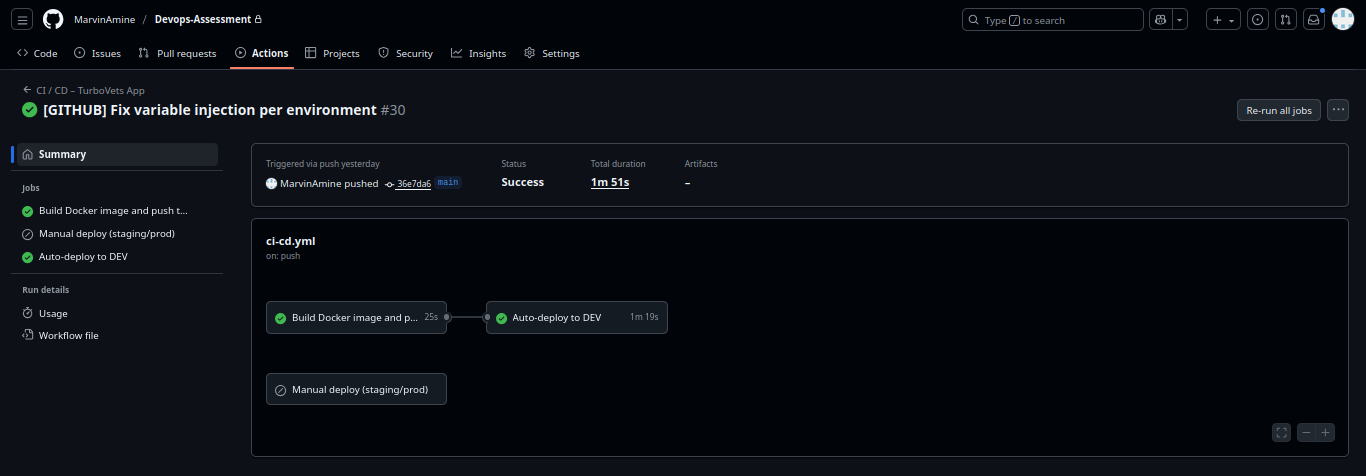
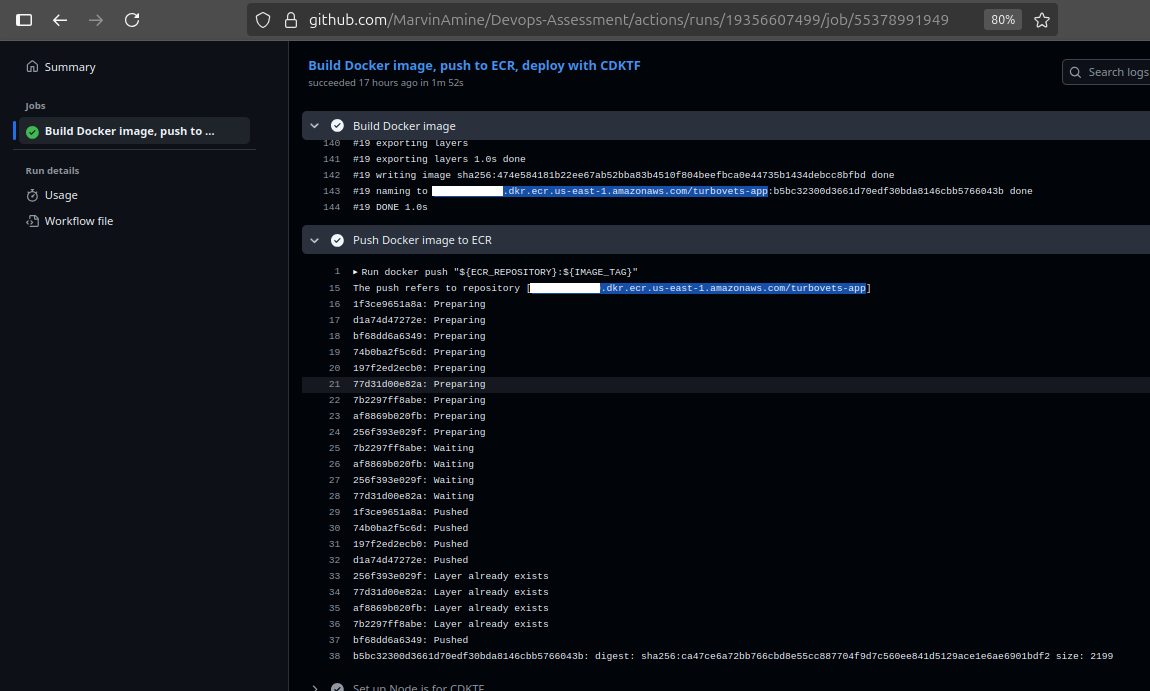

RepositoryNotEmptyException that would occur if Terraform tried to destroy
a non-empty ECR repository.
- CI creates repository on-demand if it doesn't exist
- Terraform state does not track ECR (decoupled lifecycle)
- Images remain safe during infrastructure updates/rebuilds
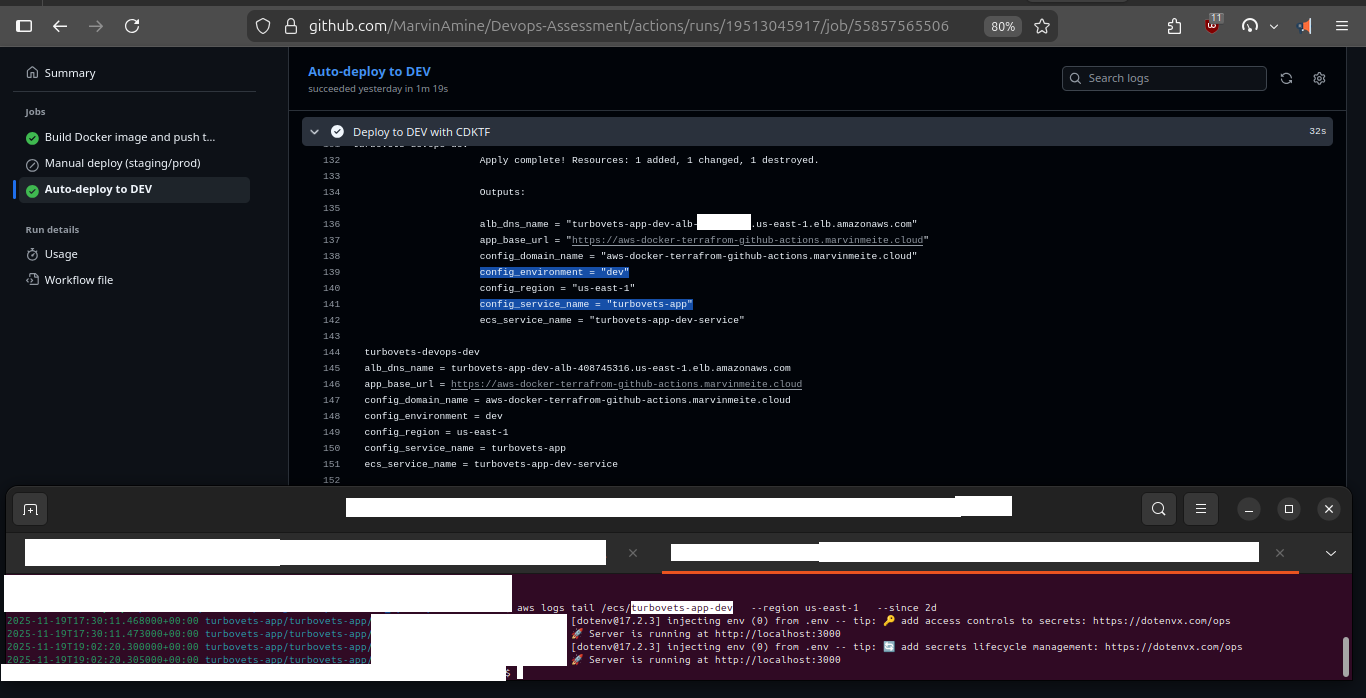
- S3 bucket: stores the
terraform.tfstatefiles per environment - DynamoDB table: provides state locking to prevent concurrent
cdktf deployruns from corrupting the state - Backend config: wired through GitHub repository variables (
TF_STATE_BUCKET,TF_LOCK_TABLE)


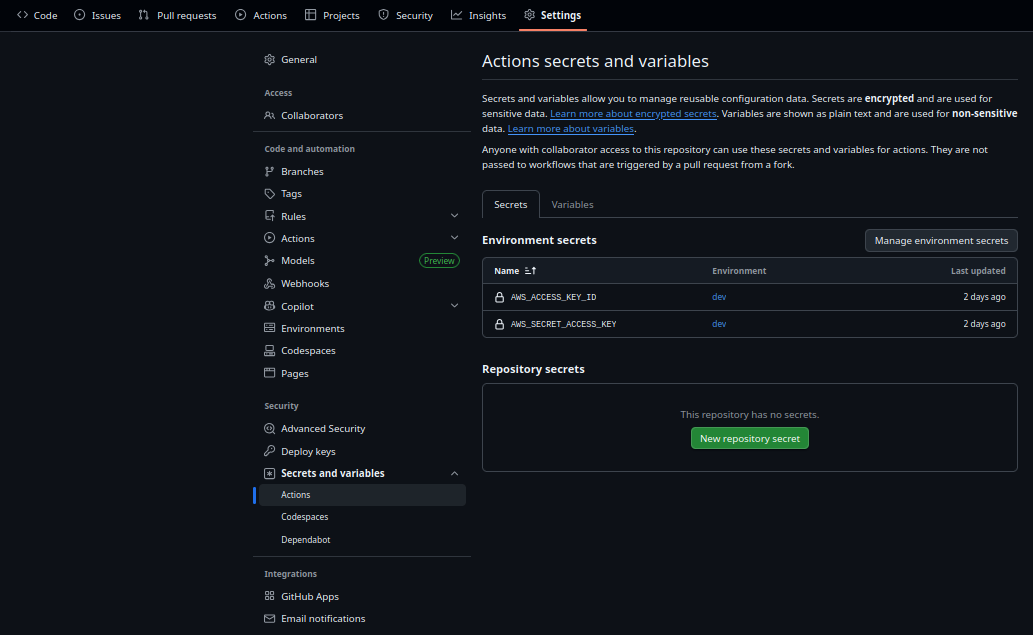


Complete variable injection during deployment showing all environment-specific configuration
IAM Configuration & Security
Least-privilege IAM setup with dedicated CI/CD user, grouped permissions, and role-based access control for ECS tasks.


turbovets-github-actions-group
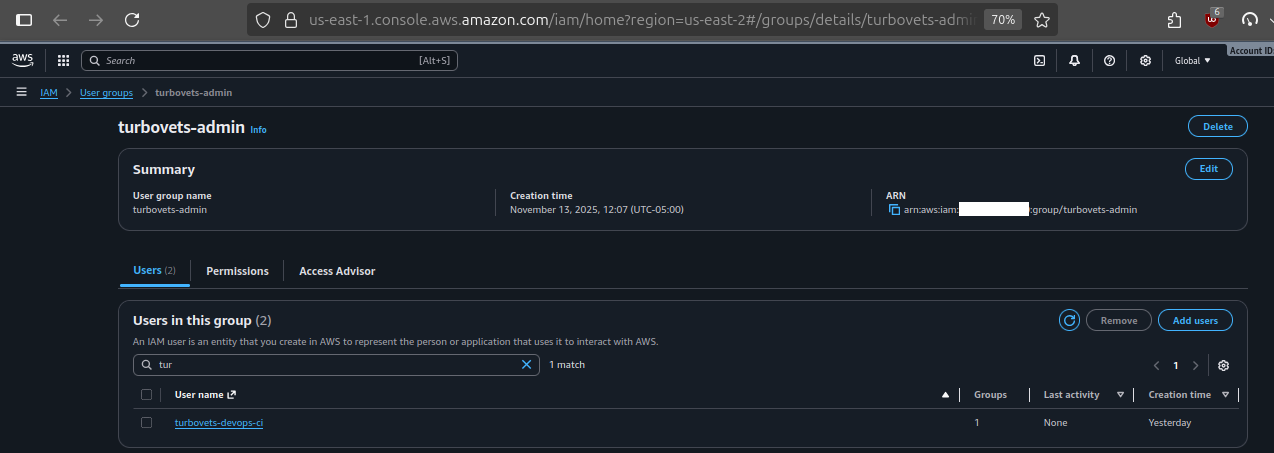
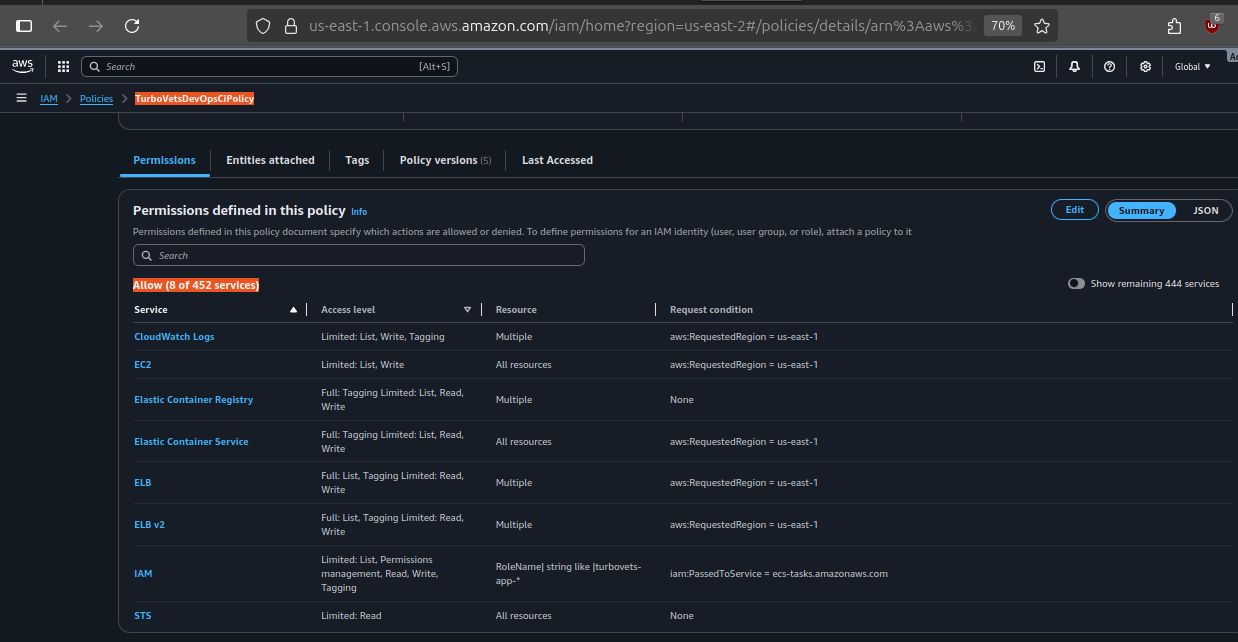
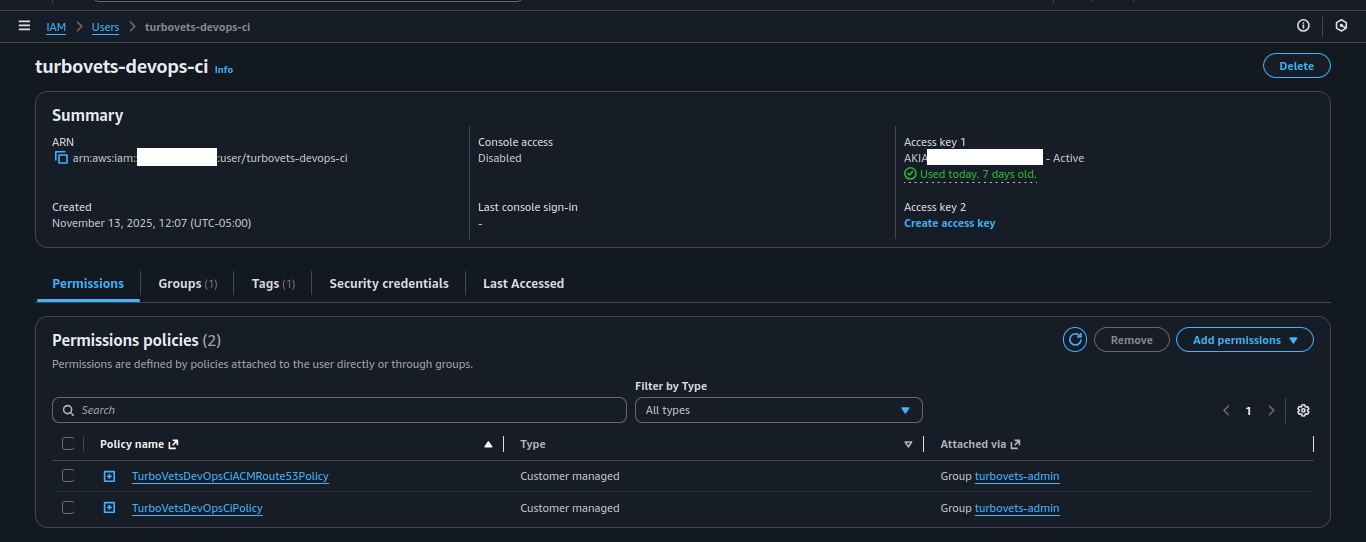
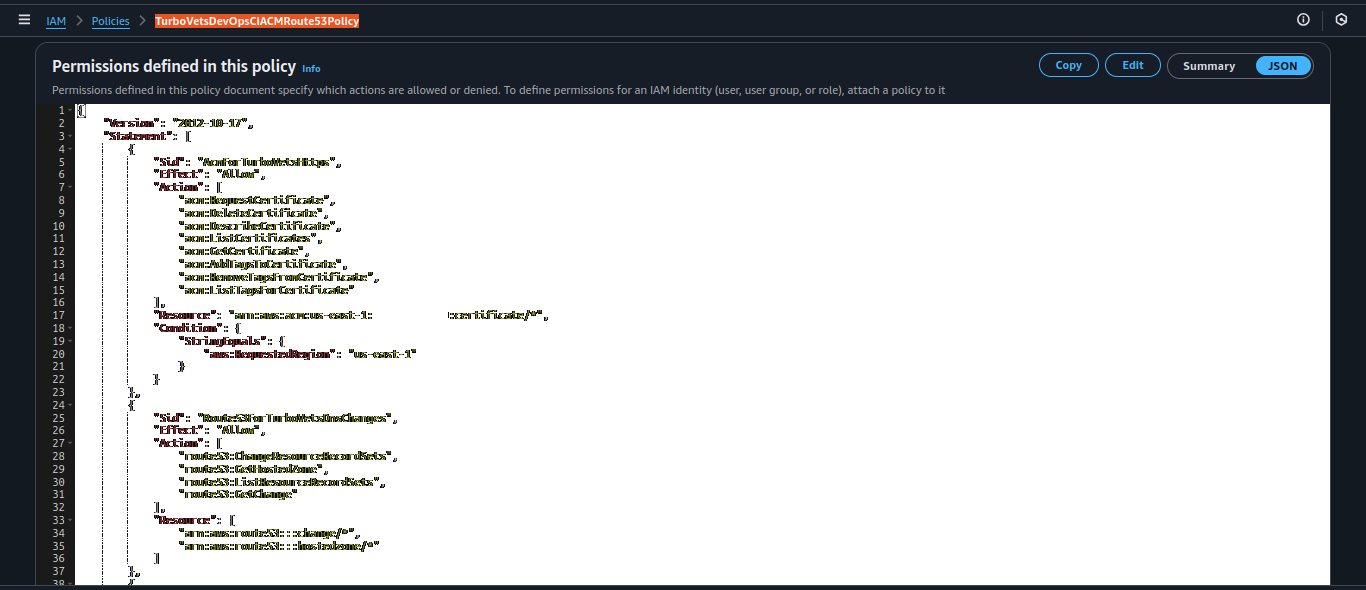
Full permission breakdown showing inherited group policies and dedicated Route53/ACM policy.
- Dedicated CI/CD user: Separate from human users for audit trail
- Group-based permissions: Easier to manage and update policies
- No inline policies: All permissions managed through groups and managed policies
- Access key rotation: Credentials can be rotated without code changes
- Task execution role: For ECS infrastructure operations (ECR pull, CloudWatch logs)
- Task application role: Empty by default, extended only when app needs AWS APIs
AWS Infrastructure Deployment
Multi-AZ VPC with ECS Fargate cluster, Application Load Balancer, and production-ready networking configuration deployed via CDKTF.
turbovets-app-dev-cluster with running service

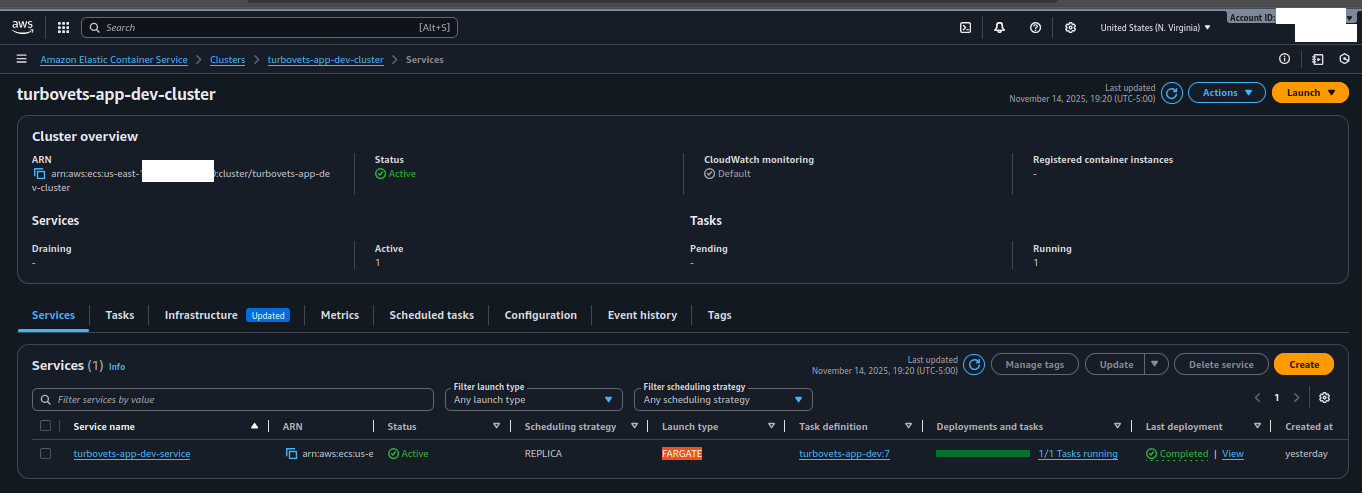

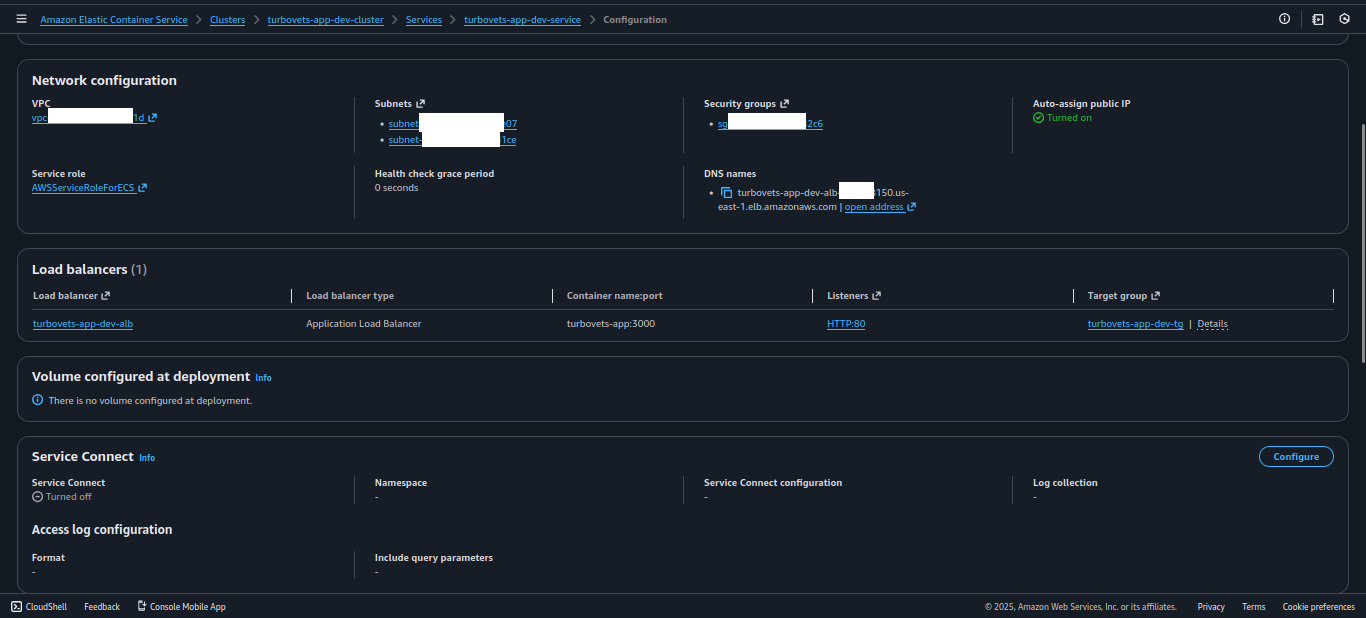
- All core resources (VPC, ALB, ECS, security groups) are provisioned via CDK for Terraform.
- Traffic enters through Route 53 → ALB (HTTPS) → ECS Fargate tasks.
- Observability via CloudWatch Logs for each ECS task family and environment.
- Networking and IAM are aligned with AWS Well-Architected best practices for small, production-grade workloads.